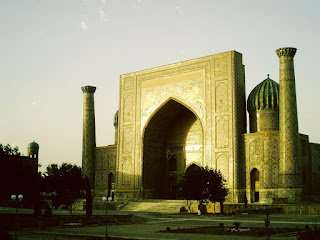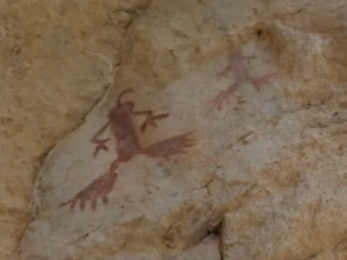
In the central square of the city is a large statue of Timur (don’t call him Tamarlane here). The first statue to stand in this square was of Gen. Kaufman – the mastermind of the Russian conquest of Khiva, and the key Russian figure for the Trek Mennonites. Kaufman’s statue was replaced by Stalin’s during the Soviet era. The Uzbeks took down Stalin after the fall of the Soviet Union. Now the good ol’ Timur rears his horse and holds out his hand as if to stay ‘stop it already.’
In the evening, a couple of professors from the local university joined us for dinner. One was an expert in ancient religion in Uzbekistan. The other, Deloram Inoyatova, was doing research on Germans who once lived in the country.
After supper, Jesse Nathan, the documentary co-producer, and I went out for ice cream with Norman and Charlene Epp, descendants of Claas Epp Jr. The descendants told us how the Great Trek is still a very sensitive subject in Beatrice, Nebraska…even generations after the episode. We discussed “incendiary” subjects, like the suspicious circumstances surrounding the death of Epp and his wife. Apparently there continues to be some family members who descended from the Great Trek that suffer similar shame and persecution their forefathers experienced after migrating to the United States from Khiva more than a century ago.



